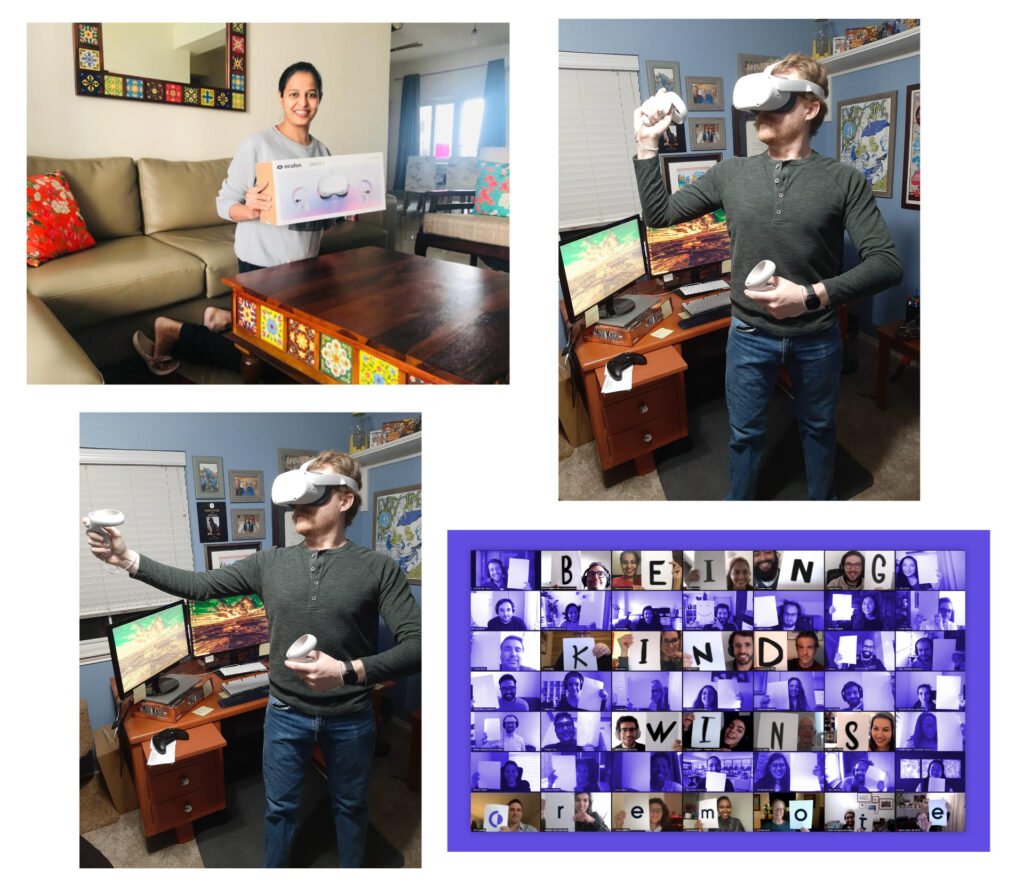Job, CEO at Remote, discusses the complexities and solutions to implementing remote work in organizations with all the necessary benefits and compliances.
1. Tell us about your role at Remote.
I am the CEO and co-founder of Remote, an HR technology platform that simplifies international payroll, benefits, and compliance for companies across the globe. I manage a team of around 60 employees, distributed in various countries across the world. My former role at Gitlab as VP of Product showed me the need for a better international hiring solution for distributed teams. During my time there, we regularly ran into problems while trying to hire people internationally. That’s why I started Remote: to help companies of all sizes hire great people all over the world, easily and in full compliance with all the complexities of international labor law.
2. Can you tell us about your journey into this market?
It was a series of fortunate events that led me to where I am today. I began my career in neuroscience, which I ended up leaving to found a startup. However, I quickly expended my funds as I was earning no money at the time. I eventually found a job as a programmer — sitting next to Sid Sijbrandij, who would later start GitLab. After about nine months, we both left that company to work on GitLab, where I helped scale our team from five to 450 employees across 67 countries without any physical offices. In this role, I enjoyed the flexibilities of a truly remote team, such as the freedom to work whenever and wherever I wanted while prioritizing what matters most, like the birth of my first child. I personally believe that everyone should have this freedom, which ultimately inspired me to start Remote.
3. How do you think technology is changing the HR Sector?
Technology is rapidly transforming the HR industry. This year, we witnessed the pandemic force many companies to pivot to remote work. As many HR teams were not properly equipped to manage teams distributed across various locations, HR solutions have been quickly evolving to meet changing needs, enabling companies to build a more inclusive, welcoming remote culture and providing employees with the tools they need to thrive in a remote workplace.
Some of the most demanded technology tools for companies are solutions designed for remote-first businesses that support and facilitate things like more efficient documentation of work, managing asynchronous work, better team collaboration and communication, and team bonding activities.
4. How is digitization empowering remote work?
Digitization has been immensely important for HR and recruiting teams navigating this new remote work environment. As mentioned above, there are a lot of new digital tools that enable companies as well as employees to be more successful in a remote workplace. Also, as the global workforce continues to expand past geographical barriers, companies are relying more on digital hiring and recruiting tools to help surface the best candidates regardless of their location. In the vein, digital hiring marketplaces have become go-to resources for employees to better tailor their job search to locate new employment opportunities, such as flexjobs, contractor positions, and remote work.
Digitization is a necessary component of working remotely, but people should not think of remote work as something that only makes sense for the tech industry. Virtually all types of knowledge roles are a perfect fit for remote work. Many companies still considering a move back to the office in 2021 would likely do better by investing more into creating a remote-first strategy.
5. What is the significance of simplifying global complexities when onboarding new employees?
It’s crucial that we simplify global complexities around onboarding and hiring for companies and employees — that’s what we do at Remote and what I think about every day. Navigating the bureaucracy of international employment law is a very steep challenge for companies looking to surface talent across global barriers. At GitLab, I experienced these incidents firsthand as we regularly struggled with complex labor laws when hiring workers who were based in different countries. At Remote, we believe that every company and employee deserves equal access to opportunities, which is why we’ve prioritized opening access to global talent for everyone when that luxury had previously been reserved for only the largest companies. With our payroll and compliance platform, we’ve simplified the process for businesses to onboard, manage, and pay workers across the globe by removing intermediaries between companies and their distributed teams.
6. How can companies comply with local laws of different countries when drafting contracts?
Complying with international labor laws is an enormous challenge, even for large companies with lots of resources. Remote exists to help companies of all sizes employ workers all over the world in full compliance with the laws of their countries. Anyone looking to hire in a foreign country must establish an entity in that country, then find local partners for payroll, benefits, and legal assistance. It’s a tricky process that can change as local laws change, so many companies choose to outsource the work to a company like Remote.
7. In what way can companies that do not have a full-stack infrastructure build a fully remote company?
Companies that wish to operate remotely must ensure that they have adequate policies in place for teams to do their jobs from anywhere. In order to succeed at this, they have to establish a culture of documentation, asynchronous workflows, and flexible working hours, and equip their employees with the adequate tools to do their work outside of traditional office spaces. Without a full-stack infrastructure, IT setup will be a significant challenge that companies need to invest in. Therefore companies may want to consider offering home office allowances to help their employees set up a suitable workspace.
8. How do you make the Remote platform secure?
Without the safety shield of a traditional firewall, the cybersecurity risks for distributed remote workers are significantly enhanced. We built our security infrastructure with these issues at the forefront of mind, taking a security-first approach to user data. We encrypt data on our platform with a specific key that is unique to users as an extra layer of protection, and broaden our list of security certifications for each country that we expand to. Our platform is the sole global provider, with its own legal infrastructure in every country that we operate in, providing our customers with absolute security for IP and invention rights.
9. Can you tell us in detail about your benefits and employee experience attributes?
Employee benefits at Remote reflect how we trust our employees to do their work well without a lot of unnecessary oversight. We have a “tell, don’t ask” unlimited PTO policy that allows people to take off whatever time they need as long as they let us know their availability. We also provide every employee with a learning stipend every year to pursue education, buy books, earn certifications, learn a new language (speaking or programming), or anything else that would help their professional growth. We make our employee handbook public, so anyone can see what it’s like to work here.
Our research from earlier this year revealed that almost half of organizations believe that positive workplace culture is essential to success and that the most sought after (remote) benefits include healthcare, home office allowances, and personal development plans/learning development allowances.
At Remote, we have established a truly remote-first culture. Our company operates without any offices and we do not plan to open any, as our model was developed on the premise that our employees should have time to prioritize important aspects of their lives outside of the workplace. As our top value is kindness, we have structured our employee experience with this attribute at the forefront. We have multiple bonding calls at different times, play games together, have fun Slack channels, and an always-on hangout where people can go to talk about non-work topics. As we are constantly seeking innovative ways to enhance our employee experience, we recently distributed VR headsets across our team to fuel a more collaborative and immersive working environment.
10. Can you talk about the future of remote work in 2021 and beyond & what remote work will look like?
In 2021 and beyond, we will see the workforce become free of geographical barriers as companies capitalize on a wider and more diverse pool of talent offered by a remote working environment. As businesses will begin to embrace remote work as a permanent model, we may see a migration of working professionals outside of traditional city hubs, and back to their hometowns or other countries — this year, we witnessed a minor “tech exodus” from Silicon Valley as tech professionals relocated to lower cost of living areas amid the pandemic.
One of the primary challenges remote work companies must address will be the distribution of salaries for workers that are no longer working from the same, central location. So far, we’ve seen businesses such as VMware and Stripe implement pay cut policies for employees who choose to work from locations that have a lower cost of living. As unequal pay distribution will inevitably lead to friction among teammates who are working remotely, and those in the office, businesses must be ready to address how they are navigating remote salaries — whether this will be establishing a flat rate or paying employees according to location.
Going into the new year, businesses must also assess whether their existing incentives are compatible with a nontraditional working environment. To avoid the risk of alienating remote employees, companies need to ensure that they are offering adequate compensation and benefits to those who will no longer have access to onsite perks. As businesses implement policies around remote work, the disparity between remote-friendly businesses (i.e. such as hybrid models) and truly remote-first companies, will inevitably increase. Companies that want to distinguish themselves as a remote-first business must establish a commitment to zero office spaces, reassess their benefits, and equip their employees with all the necessary tools they need to do their jobs regardless of location.
11. What are the major developments you are planning, in recent times?
We recently completed our Series A funding round, which will help us broaden our suite of offerings and accelerate our expansion to 40 countries by the end of year. As our company has undergone tremendous growth this year, we have also launched a fun and exciting company-wide initiative where we provided all employees with Oculus Quest 2 VR headset to help create a stronger bond among team members and enable better collaboration. We held our first VR day on December 9 to explore different ways to work, play, and communicate in a virtual environment. To identify and explore other opportunities like this one, we founded Remote Labs, an innovative initiative within Remote to further fuel collaboration and creativity across our team.
12. How can HRTech help in rekindling the spirit of Christmas amongst the remote employees?
HR Tech can be utilized as a tool to connect teams and foster an environment of camaraderie among the holiday season.
This year, we’ll be leveraging our recently distributed Oculus Quest VR headsets to host a virtual “in-person” holiday party. A few of the party activities include door prizes, beat saber contests, and the opportunity to hang out and play in apps like Spatial and Rec Room. As our employees are located across various geographical locations and time zones, the party will be a two-day event, so that each team member will have the opportunity to take part in the festivities.


13. Can you tell us about your team and how it supports you?
As mentioned above, our team operates on the fundamental value of kindness. Starting with the initial hiring process, we ensure that each member of our team embodies this virtue, as without kindness at the core, remote workforces suffer. We assume the best of our colleagues and trust them to get their work done and do it well, and we know they do so, because our culture of documentation leads us to catalog our work and communicate constantly.
To foster more connections and collaboration among our teammates, we recently changed our meeting structure to schedule at least one bonding call a day for people in different time zones. We also have one all-hands meeting per week, which alternates between two meeting slots to make it easier for more people to attend. Without the benefits of in-person communication, these initiatives have been essential to upholding our structure as a team, and addressing instinctual, human needs for connection, clarity, and creativity.
14. What movie inspires you the most?
I’m not sure about inspiring, but I have always really liked sci-fi. Star Wars and Interstellar are my favorites.
15. Can you give us a glance of the applications you use on your phone?
The apps I use the most include:
- Superhuman, my email app
- Slack, for more immediate communications
- BabyGlow, for my baby
- Revolut, for payments
- Overcast, my favorite app for podcasts
For more such Updates Log on to www.hrtechcube.com

Job van der Voort CEO at Remote
Job van der Voort started his career as a neuroscientist before leaving academia to become the VP of Product at the largest distributed company in the world, GitLab, where he helped grow the company from five to 450 employees across 67 countries with no offices. He’s now the CEO and co-founder of Remote, an HR tech startup solving remote global organizations’ biggest challenge: employing anyone, anywhere, compliantly.












